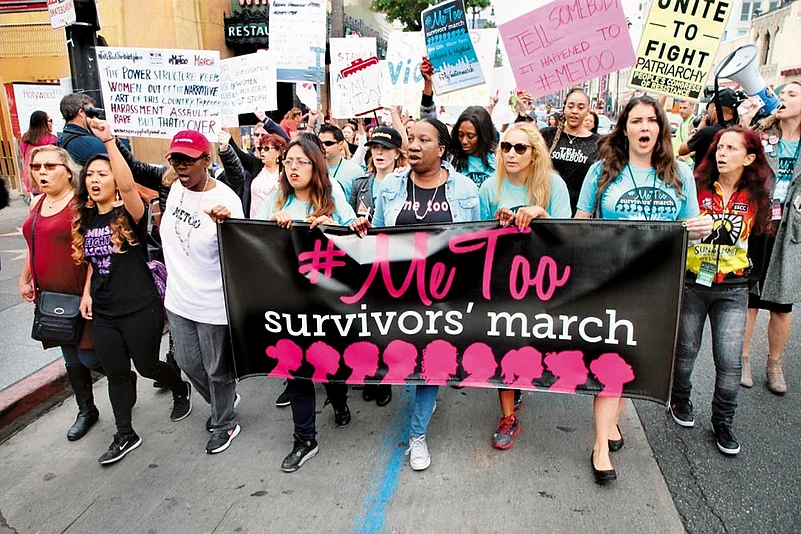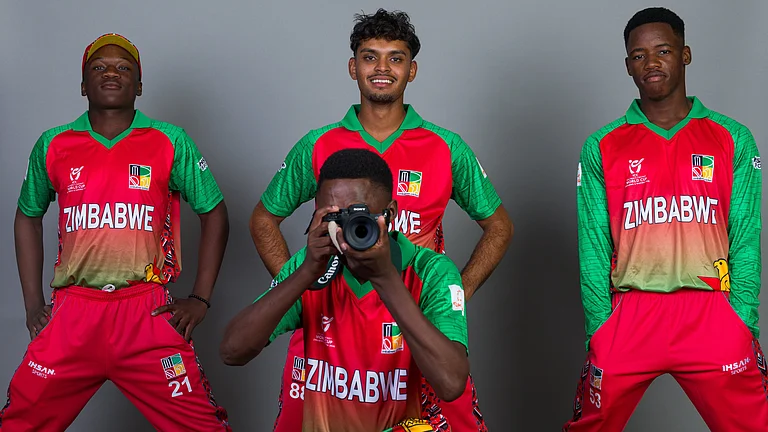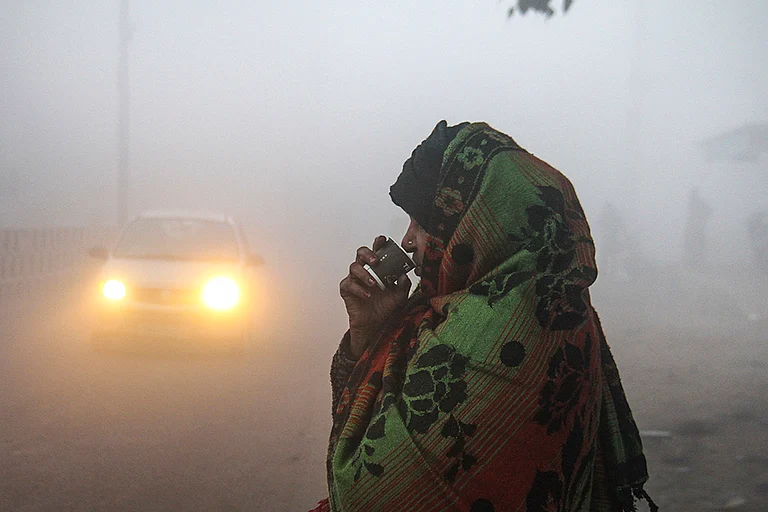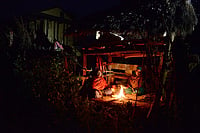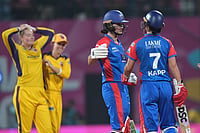The MeToo movement was picking up steam over the months when it reached a curious impasse. The main channel flowed unimpeded of course—the latest prize exhibit coming in the shape of the beer-swigging frat boy-turned-judge, Brett Kavanaugh. But before that, the tyranny of averages had brought about a twist, perhaps an inevitable one. Two prominent women, one in academia, and one in showbiz, were accused of severe sexual harassment. NYU professor Avital Ronell was accused of sexually aggressive behaviour and sending downright raunchy emails to a PhD student. And Italian/Hollywood actress Asia Argento was accused of seducing a minor. The emergence of women in the predatory role threatened to turn the tables in the MeToo debate. Feminists who chose to defend them—luminaries like Gayatri Spivak and Judith Butler among those who spoke up for the NYU professor—ran the risk of being seen as treating women like sacred cows. And it had now to be acknowledged that power is the culprit. That power, gender-neutral in the abstract sense, breeds a form of sexual entitlement, which is violently and humiliatingly enforced on victims, be the perpetrators men or women.
But are things as simple as that? Are predatory women instead speaking a kind of male language? Merely mimicking the age-old behaviour of men in power? Before we dive into that, one layer of complication, accusingly flung into the debate by ‘bros’ claiming victimisation by the MeToo movement (witness Trump’s latest comment that “it’s a scary time for young men in America!”), merits adjudication. This is an unspoken truth, the proverbial elephant in the room: a significant number of women, especially in a success-driven country like the US, are encouraged or tempted to routinely use their sexuality in their drive towards advancement. This is at odds with feminist ideology and practice but coexists with it nevertheless.
But while putting the (unreal) idea of female virtue at some risk, does this not offer empirical proof that this a male-ordered world? And women’s agency must be largely exercised within its bounds? The later MeToo incidents allowed the prism to filter some of these doubts as women slowly came into view not merely as victims but in a murkier light. There was, for instance, the case of the journalist from DC whose older informant turned, inappropriately, into a boyfriend.
This was but a slight detour, though. The furore around Ronell-Agento had just died down when the pendulum swung again—back to male aggression. This time the accused was awaiting confirmation as a US Supreme Court Justice. The predatory atmosphere of male bonding in even elite circles in the US, which has come to light with the Kavanaugh controversy, is a pattern not unfamiliar in India. Almost in sync with the Kavanaugh case, actress Tanushree Dutta shone a torch at the aggressive masculinity that passed without comment for decades in Bollywood. The star system, whether in academia or in films, creates a culture of impunity. Everywhere, men bond by belittling women sexually. When women resist and tell, they are branded as uptight or as liars. When they play the game, they might be rewarded with a pathetic kind of success, only to find their self-esteem pulverised in the long term. Either way, sexuality serves as both index and articulation of male power.
The exceptional cases of predatory women, or indeed the existence of women willing to play the game, hardly negate—indeed, proves—the undeniable institutional, social and economic power men possess. Men are more likely to be in positions of professional or economic power. For every powerful woman exposed for harassment, thousands of men go unreported or untried. Most women go through unspeakable trauma fending off unwanted males. How many tolerate abuse to further their careers or for fear of reprisal?
The Kavanaugh case shows us how the patterns of conditioning are set right in the teens. The social moulds for the continuing victimhood of women are created early—and the younger they are, the more traumatised they are, for they are not yet armed with life’s lessons. At what point do some of them decide to play the game and exploit their sexuality for advancement? What happens to those scarred for life by matters they feel ashamed to speak of?And how do we determine when coercion occurs and when it does not? The feminist litmus test is supposedly female consent, but it’s the mere tip of the iceberg. In a culture where sexuality has been embedded in an asymmetrical power matrix for millennia, what does consent cover? Playing up to it? Tolerating it?
Initially, MeToo brought a recurring paradigm out of the closet it occupied in many women’s lives: the sense of being dimished by powerful, predatory men, and yet choosing silence for fear of economic or social reprisal. As the movement spread across the globe, the failure of due legal process brought out younger, relatively powerless women, as in the Raya Sarkar exposure, speaking from ‘a place of helplessness’. However, throughout, more class-based critiques pointed out that poorer women, tribal women, women from the weaker castes, immigrant women, and in the past enslaved or indentured women have always suffered such abuse. It’s true that the voices of elite white women or, in India, privileged caste women speaking up has just brought attention to an old problem.
But going beyond the plain-vanilla cases, how to make sense of the greys? A long-range view could clarify things. The use of sexuality as a currency for reward, even economic survival, by women, is something patriarchy first instituted in prostitution. Changes in sexual morality have only widened the number of women thus exploited. Sexuality as currency is thus the root patriarchal issue here. Women in power merely use this currency, this time against men dependent on them.
The occasion should also alert us to socio-historical constructs, of public and private space, the female body, sexuality itself, in various historical times and societies. We must scan the specific historical trends in each region, even as we address transnational commonalities. If savarna power is a factor even in contemporary India, we must look at its roots in institutionalised exploitation through the centuries, as in the devadasi system. Temple dancers acquiesced in their own sexual exploitation in return for patronage. (Divine sanction, and the pursuit of art, offered the sugar-coating.) The pattern is really no different from the exploitation of a research scholar who might be coerced or inveigled into sexual favours in return for academic patronage. It’s often very difficult to prove coercion if the rewards for the woman are obvious. Even if people wonder if she did it for self-gain, the situation smacks of how the bodies of women are controlled.
In the US, where MeToo first won public attention, cultural history is usually ignored, relegated to a curiosity. But some of these contradictions have a long history. Achievement versus sexual abjection is the dialectic within which the social history of American women from Puritan times to the present has unfolded. The two poles have internal contradictions. Achievement and self-actualisation are not always linked in a competitive society, and while women are encouraged to achieve, their goal-setting remains muddled. Are they achieving in order to find love or a husband? Does success go with self-esteem?
Which brings us to the second pole. The latter quest, finding a man, we see, is linked to abjection and objectification. Even if quite removed from the private truths of women’s lives, it is carried forward in public images, on TV, magazines, films, the lives of film stars, and so on. The images of women that circulated in the social imaginary changed from time to time.
The slow steps of women’s emancipation advanced not in a linear way but in fits and starts, even backward moves. In 1963, Betty Friedan uncovered how women had actually regressed between the 1920s and the 1950s and how this was orchestrated partly by women’s journals which started to promote the domestic woman instead of the more autonomous image of an earlier generation. Friedan showed how the college-educated woman of the ’50s accepted her public TV image of suburban housewife, adept at all the gadgets of modern life, as she shepherded her four children through childhood and adolescence while remaining deeply dissatisfied and unhappy. It’s useful to remember this emptying out of women while reflecting on what specific factors could have exacerbated the abuse of recent decades—and what that tells us of the limitations in feminism.
Throughout US history, women’s power and sexuality have been negotiated with reference to race: settler paranoia, genocide, slavery, immigration laws and control. In the white settler period, pioneer expectations and realities for women went along with intense Puritanical shame at female sexuality. The conflict with American Indians, captivity and rape of women on both sides framed the contradiction. The Wild West frontier tradition created its own dialectic, framing female strength and toughness within the construction of female sexuality as wild, pathological, untamed and lacking in modesty. In antebellum society, white women were constructed misleadingly as virginal victims, and black women as oversexed.
The manipulation of sexuality was always part of the picture. Though rape and sexual use/abuse of enslaved women was the norm, it was well known that one way to move up from field slavery into house slavery was to be in the master’s good books. Yet we know from countless slave narratives that the majority of slave women felt humiliated and broken by the rapes they suffered. Their emotional histories tell us a lot more than the simple judgement of their actions in response to sexual coercion. Many women also develop a cynical affect, refusing to let emotions get in the way of their struggle for survival, through the strategic use of sex if need be.
All these questions of sex and emotion become moot in the current generation of sexual freedom where a Tinder encounter is only a phone call away, and consensuality is the only ethical standard applied. Did the women or the men wish the encounter every step of the way? But this is only part of the problem. Women’s so-called consensuality is not necessarily authentic or proof of self-actualisation. It could simply reflect an internalisation of the prevailing mores -- which are that the chief sign of women’s liberation is her sexual liberation and freedom of sexual choice. Such an attitude, very prevalent in the West, can be diminishing to women, instead of empowering, especially when this ‘liberation’ often means abasing oneself before a man and then getting into a self-perpetuating cycle of self doubt. Many of the MeToo cases, though not all, involve an assumption on the part of the women that they live in a truly free society, leading them to trust a professional situation as being gender-neutral, leaving them open to humiliation and abuse.
In the US, myriad cultural backgrounds coexisting in a supposedly modern space give rise to myriad approaches to gender and sexuality. The neoliberal economy depends on the untrammelled consumption of sex in the service of new global affirmations of free unrestricted choice while building on earlier, post-Freud paradigms of sexuality being the key to the individual’s autonomy. Place this on the settler Puritan inheritance of repression and guilt, the Wild West frontier tradition’s dialectic, the materialist images of the Jazz Age and its women as the weakest links in a chain of production and consumption. These are the figures at whom consumer society directs its messages—at once the targets of advertising as well as its empty symbols, never a productive part of the world.
The attitude behind this legacy of gender inequity is not easily dislodged and needs long-term education and consciousness-raising. But awareness of the double-edged damage in mindsets—the use of sex in the abuse of power by men, and the dubious position it puts women in—is essential. It’s a no-win situation: the woman either loses her chance at survival, or her reputation. Attention to the emotions of women, and the dilemmas they go through in each historical situation, may help level the playing field.
(Nalini Natarajan has authored five books, among them Atlantic Gandhi: The Mahatma Overseas. Her latest book -- The Unsafe Sex: The Female Binary and Public Violence Against Women [OUP, 2016] deals with violence against women in India. Her current manuscripts are titled The Hollywood Eastern [forthcoming] and America's Girls, which deals with the subject of this column.)
A shorter, edited version of this appeared in print






